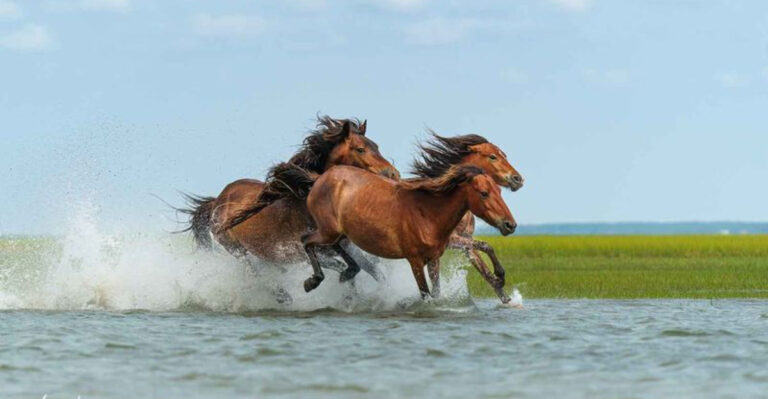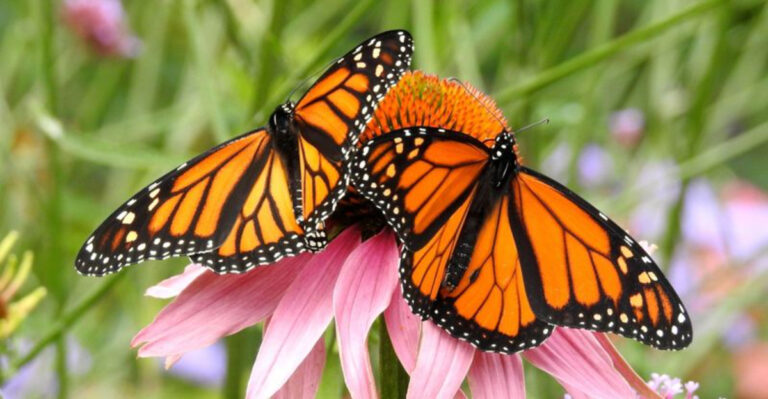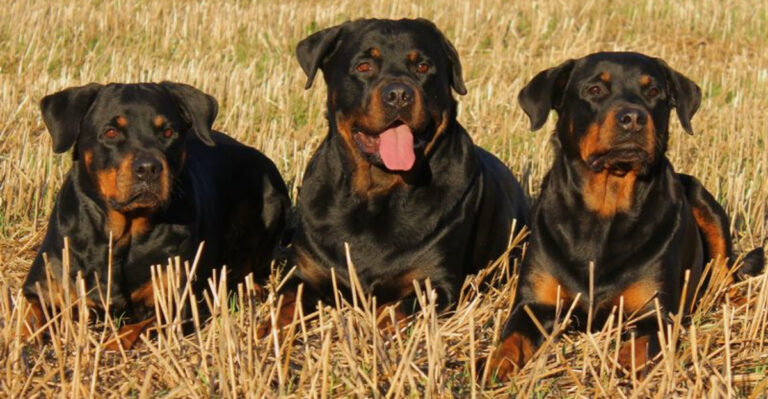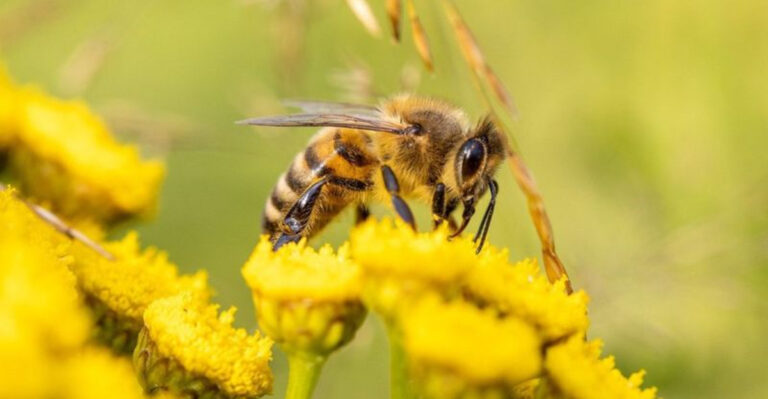16 Worst Dog Breeds For Families
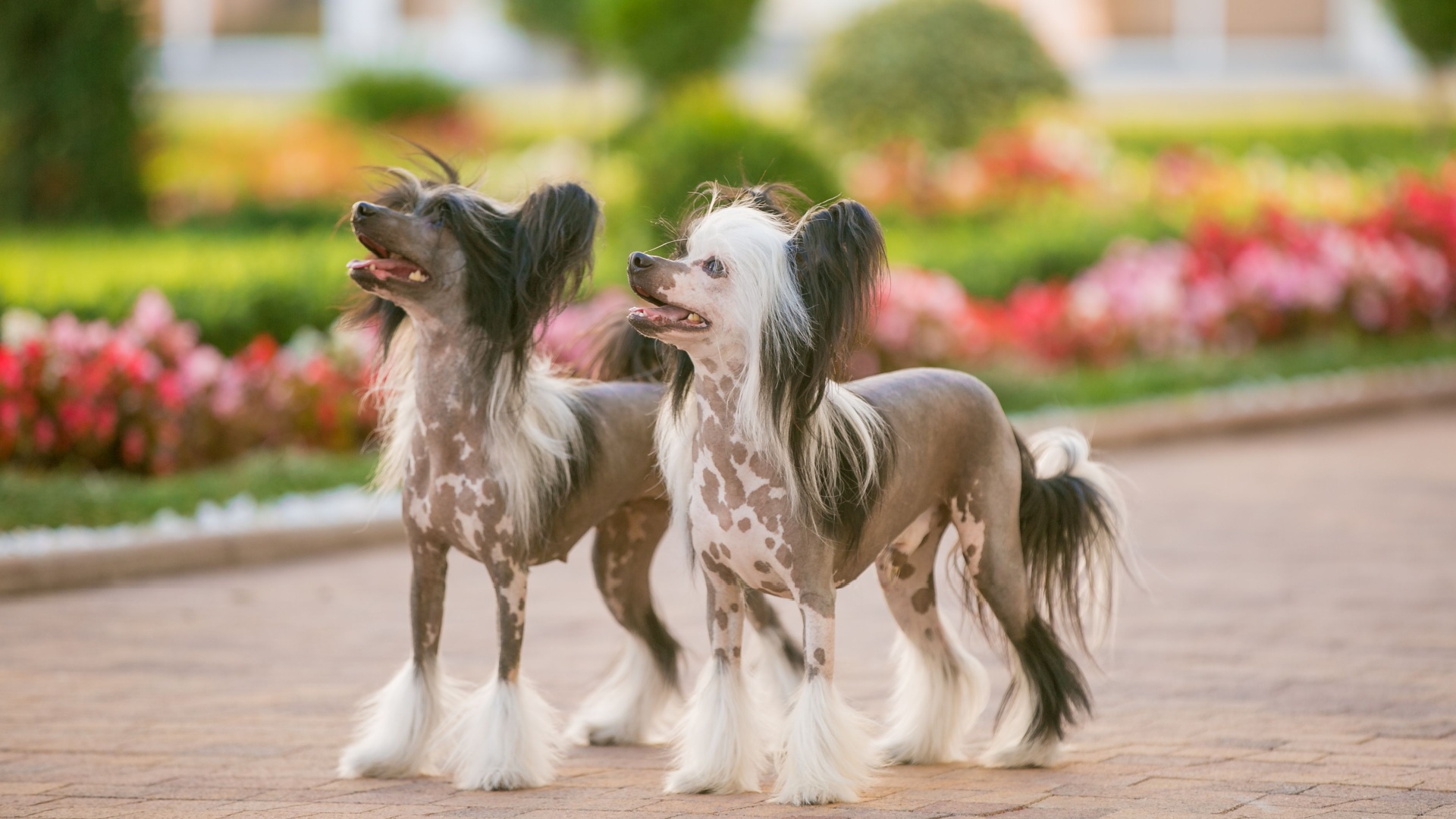
Bringing a dog into your family is an exciting decision, but not every breed is a perfect fit for a busy household.
While all dogs have their lovable qualities, some breeds come with challenges that may make them less ideal for families with kids. Whether it’s high energy, stubborn behavior, or special care needs, certain pups require extra patience and training.
Before choosing your next furry friend, let’s take a look at some dog breeds that might not be the best match for a family setting!
1. Chow Chow
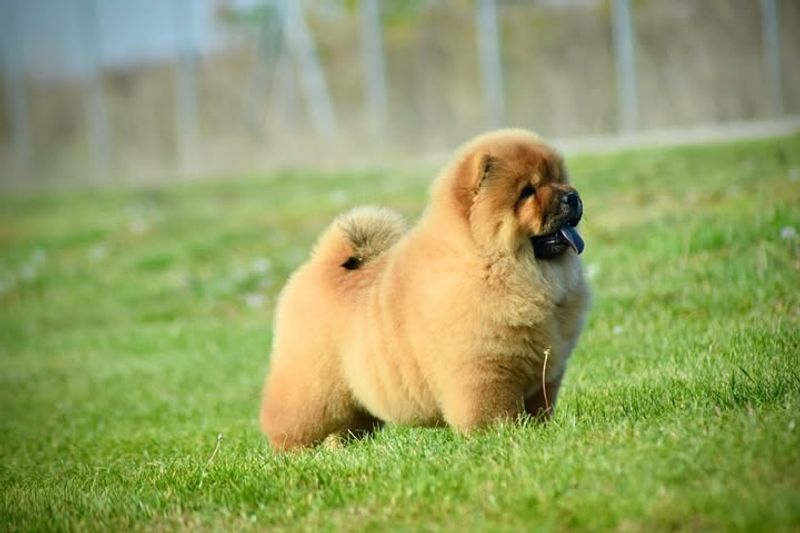
Known for their aloof and independent nature, Chow Chows are not always the best playmate for young children. Their stubborn temperament means they often prefer their own company, and their loyalty is not easily won. In a family setting, they require a calm and patient environment, and even then, their distant nature might not mesh well with an affectionate family dynamic.
Chow Chows also come with a few physical responsibilities. Their thick double coat needs regular grooming, lest you fancy living in a sea of dog hair. Additionally, they are prone to heatstroke due to their dense fur, which means they require attentive care during the warmer months. Families often find these demands challenging amidst the hustle and bustle of daily life.
For those with older children who understand personal space and respect an animal’s autonomy, a Chow Chow might fit the bill. However, families seeking a dog that thrives on attention and play may find themselves at odds with this noble yet solitary breed.
2. Akita
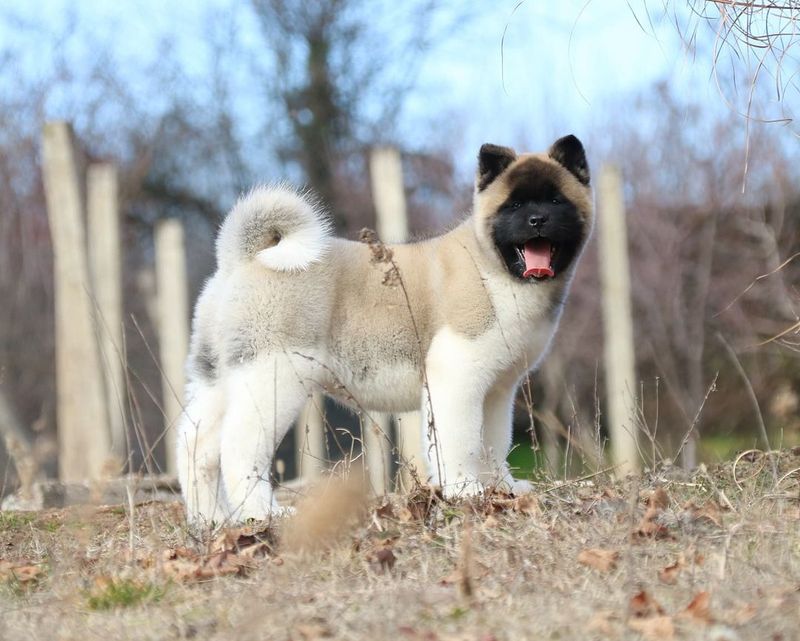
With their majestic appearance and powerful build, Akitas are often seen as noble companions. However, their innate independence and strong-willed nature can become challenging in a family environment. Akitas are known for being assertive and territorial, traits that can pose issues with small children who might not understand their boundaries. T
his breed’s loyalty is unparalleled, but it’s reserved for those they deem worthy. Socialization from a young age is necessary, but even then, they may not be the most playful pals. Akitas require experienced dog owners who can establish themselves as the leader, ensuring the Akita respects and follows their guidance.
Moreover, Akitas have a thick, weather-resistant coat that demands regular grooming. While their dignified presence is appealing, families must consider whether they can handle the grooming and the breed’s need for mental and physical stimulation.
In summary, the Akita may be best suited for families with older children and prior dog-handling experience.
3. Dalmatian
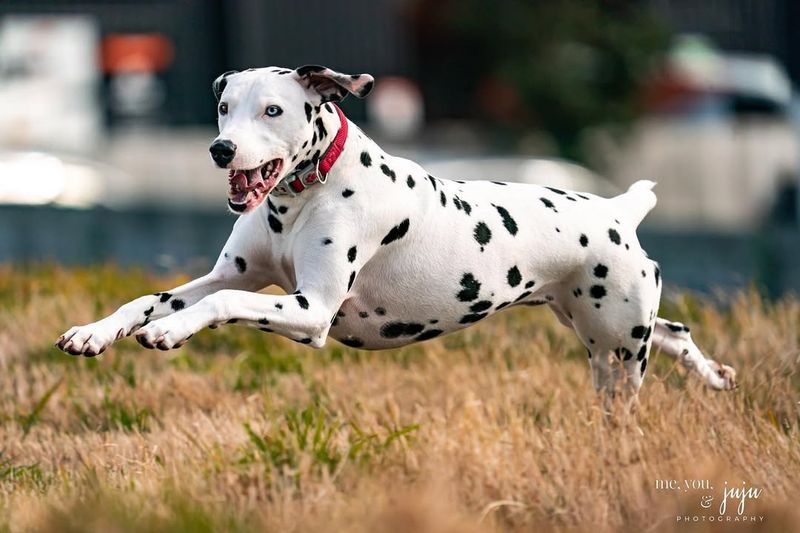
Dalmatians are accompanied by an energy level that matches their iconic spots. Renowned for their high-spirited nature, these dogs require an active lifestyle, which can be overwhelming for busy families. Without proper exercise, they can become restless, leading to destructive behaviors that are far from ideal in a family home.
Their strong-willed and intelligent nature is a double-edged sword; they thrive on mental challenges but can be stubborn during training. Families must be prepared to invest time in consistent, positive reinforcement training to channel their energy constructively.
Additionally, Dalmatians are known to have a genetic predisposition to deafness, requiring families to be attentive to their health needs. Their short coats shed almost continuously, meaning regular grooming is required to keep homes fur-free.
For families who enjoy outdoor activities, a Dalmatian might be a spirited companion; however, those looking for a low-maintenance pet may find themselves overwhelmed by this breed’s exuberance.
4. Jack Russell Terrier
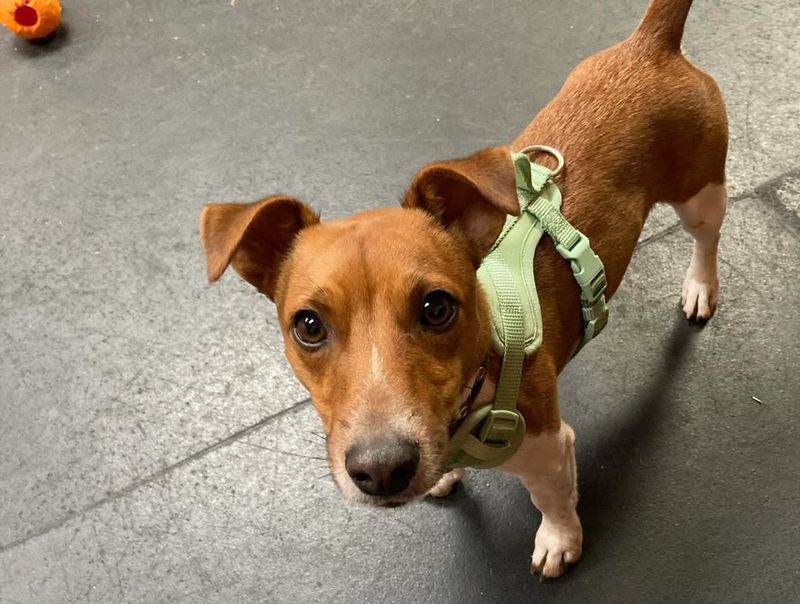
The small yet mighty Jack Russell Terrier is a firecracker wrapped in a cute package. Known for their intelligence and boundless energy, these dogs are always on the go, leaving families with little time to catch their breath. Their inquisitive nature means they are constantly exploring, which can lead to mischief if not monitored closely.
Jack Russells are highly trainable but require consistent discipline and mental stimulation to prevent boredom. In a family setting, their energetic antics can be entertaining but also exhausting. Their high prey drive and tenacity mean they often chase smaller animals, which might not be suitable for families with other pets.
While their small size might seem ideal for indoor living, they require a lot of outdoor activity to burn off energy. Families without a spacious yard or those unable to commit to regular exercise sessions might struggle to meet this breed’s needs.
5. Weimaraner
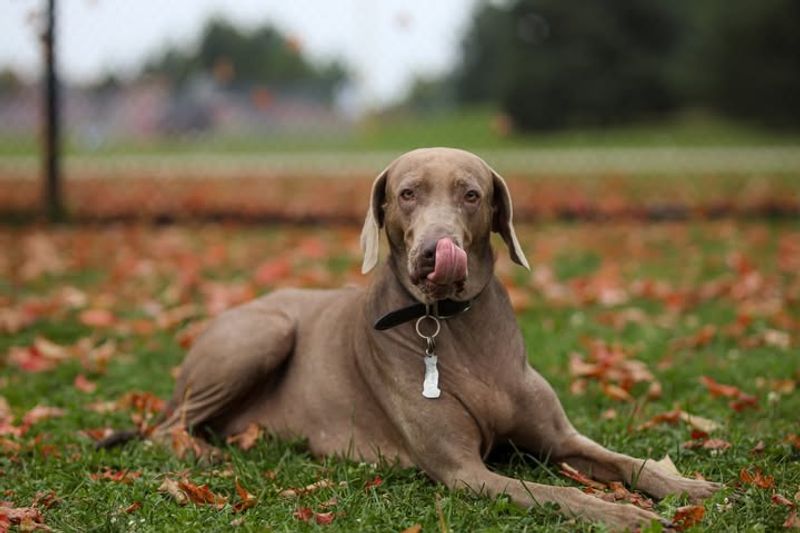
Weimaraners, often referred to as the “gray ghosts” due to their sleek coats, are vibrant and energetic companions. While they are loyal and affectionate, their need for constant activity and mental stimulation can be too demanding for many families. These dogs thrive in environments where they can run freely and engage in regular exercise.
In families with young children, a Weimaraner’s exuberance can sometimes lead to unintentional rough play. They require firm and consistent training to harness their energy appropriately. If not given enough attention and exercise, they can become anxious and exhibit destructive behavior.
Moreover, Weimaraners are known for their intelligence and curiosity, qualities that require owners to be vigilant and patient. Their strong bond with their humans means they can suffer from separation anxiety if left alone for long periods.
Families considering this breed must ensure they have the time and resources to provide an active and engaging lifestyle, or they may find the Weimaraner’s demands overwhelming.
6. Alaskan Malamute
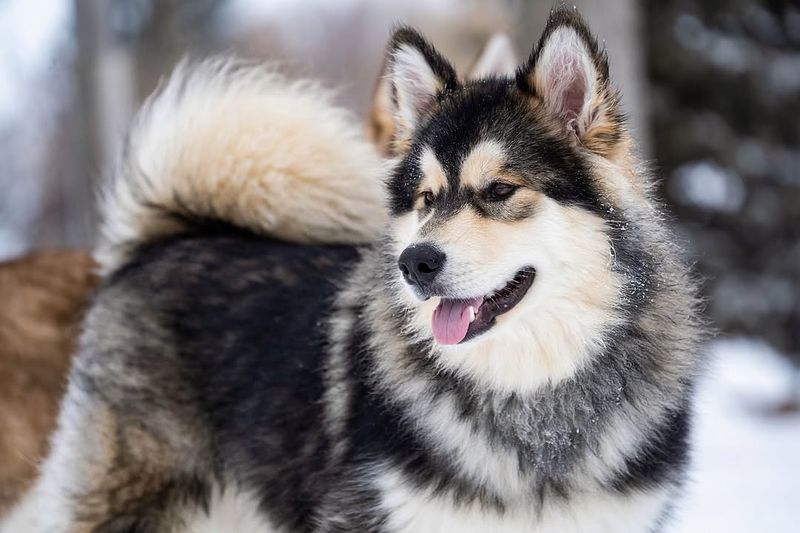
Originally bred for pulling sleds, these dogs require ample exercise and space to roam. In a family setting, their powerful build can be overwhelming, especially for small children. Malamutes are intelligent and strong-willed, often testing boundaries and requiring firm training.
Their independent nature means they are not always eager to please, making obedience training a necessity. Families must be prepared for the challenge of maintaining control and setting clear rules. Their thick double coat demands regular grooming, and they shed quite heavily, especially during seasonal changes.
Malamutes have a strong prey drive and may not coexist well with smaller pets. Due to their demanding needs and large size, they are best suited for families who have experience with high-energy breeds and can provide a stimulating environment.
7. Basenji
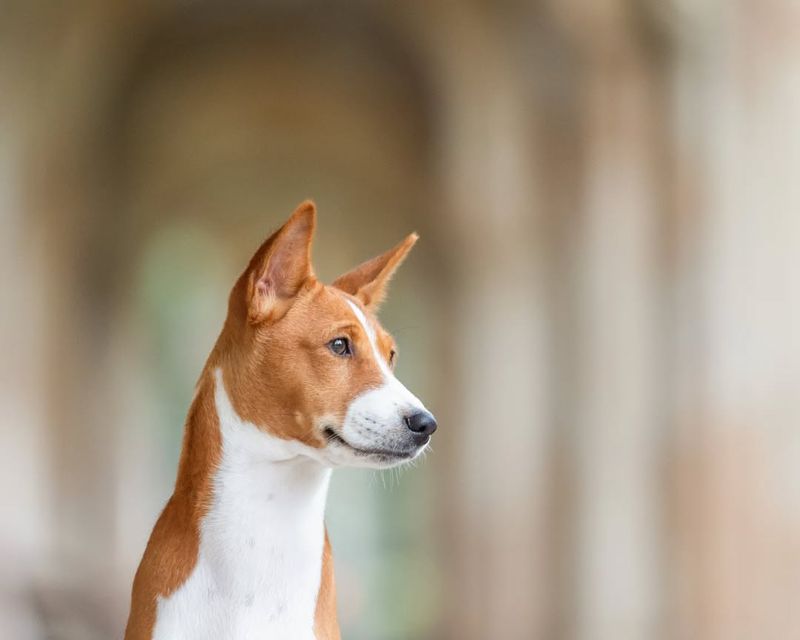
While their quiet nature might seem appealing, Basenjis are far from low-maintenance. Their independent and cat-like demeanor can be puzzling for families expecting traditional canine companionship. These dogs are notoriously aloof and have a strong desire to explore.
They require secure fencing and constant supervision outdoors to prevent their escape-artist tendencies. Basenjis are intelligent but can be stubborn, often testing the patience of their owners during training. Their grooming needs are minimal due to their short coat, but their energetic nature demands daily physical and mental exercise.
In a family environment, their aloofness might be mistaken for disinterest, and they prefer homes where their independent spirit is respected. Basenjis are best suited for families who appreciate their unique characteristics and can offer a vigilant, energetic lifestyle.
8. Afghan Hound
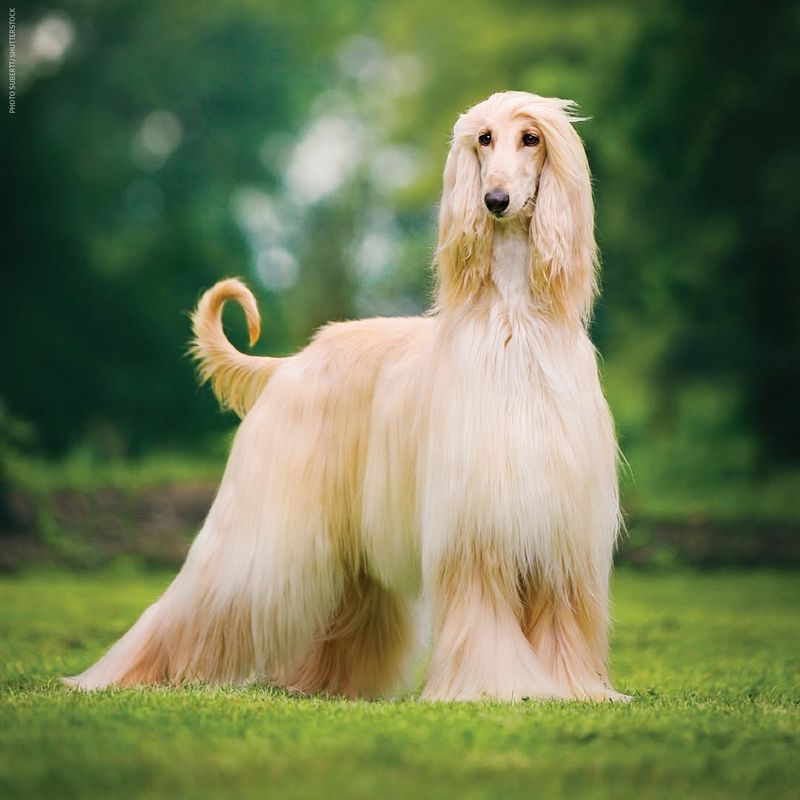
Known for their aloof and independent nature, Afghan Hounds are not always the cuddly companions one might expect. Their long, silky coats require regular grooming to prevent matting, a task that can be both time-consuming and costly. Families must be prepared to dedicate time and resources to maintaining their hound’s luxurious appearance.
Afghan Hounds have a tendency to be selective with their affection, often appearing aloof or distant. In terms of activity, Afghan Hounds are agile and require regular exercise to satisfy their hunting instincts. Their independent nature means they might not always come when called, posing a challenge in family settings.
Families considering this breed should be ready for the demands of grooming and exercise to ensure their Afghan Hound remains happy and healthy.
9. Chihuahua
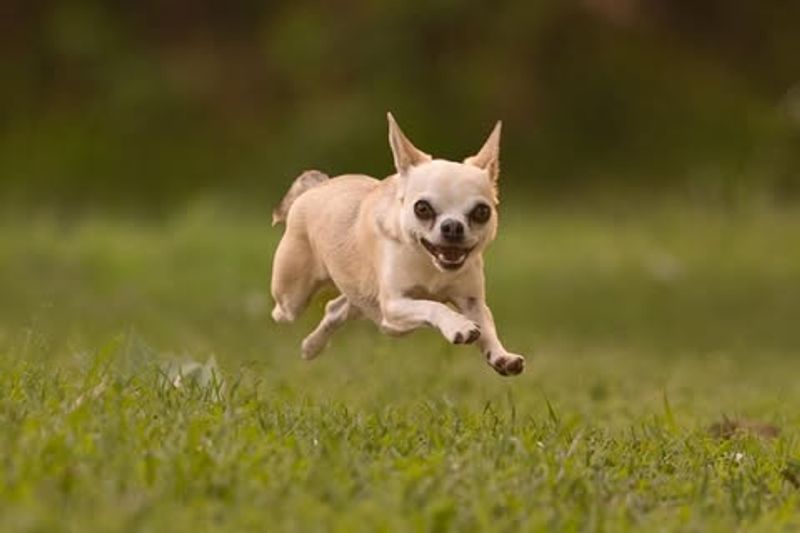
Chihuahuas may be small in stature, but they often house a big personality. Known for their feisty nature, these tiny dogs can be surprisingly high-maintenance and are not always the best fit for families with small children. Their delicate size makes them vulnerable to injury, and they may not tolerate rough handling, which is common in households with young kids.
Chihuahuas are fiercely loyal to their owners but can be wary of strangers, sometimes displaying aggressive behaviors if not properly socialized. In a family setting, their bold attitudes require firm boundaries and consistent training to prevent dominance issues.
Families who travel frequently or lead active outdoor lifestyles might find accommodating a Chihuahua’s needs challenging. However, in a quieter household with older children or adults who understand their unique temperament, Chihuahuas can be delightful companions.
10. Shiba Inu
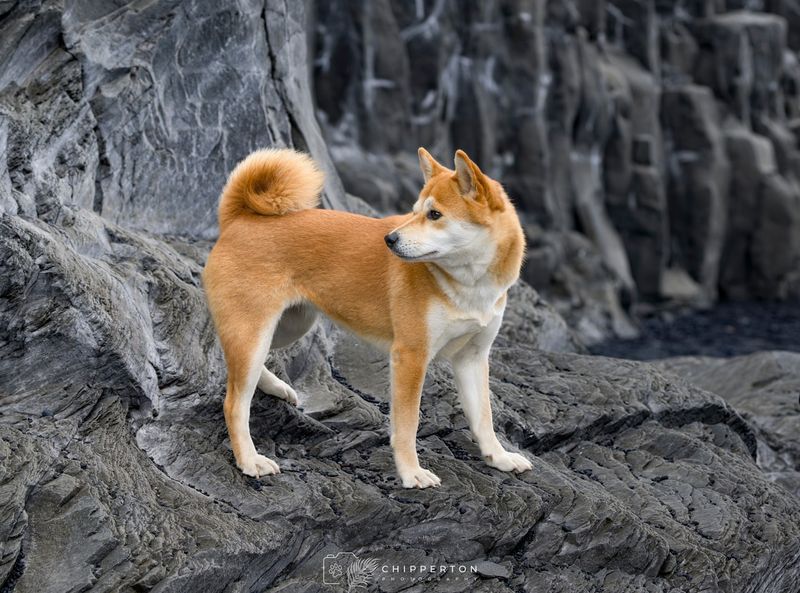
While their attractive looks and compact size can be enticing, Shiba Inus are known for their bold personality and stubborn nature, which can be a hurdle in family environments. This breed is highly intelligent but also notoriously difficult to train, often testing the limits of their owners’ patience.
Shiba Inus require consistent and firm leadership, as they are quick to take advantage of any perceived weakness in authority. Furthermore, Shiba Inus have a high prey drive and may not be suitable for homes with small pets. Their aloofness might be mistaken for disinterest, but they are simply selective about their interactions.
Families considering a Shiba Inu should be prepared for the challenge of training and socialization, ensuring they can offer a structured and engaging environment for this spirited breed.
11. Russian Toy

Due to their small size, they require gentle handling, which may not align well with homes bustling with small children. These dogs are known for being affectionate and devoted to their owners but can be wary of strangers. Socialization from a young age is essential to prevent shyness or anxiety in unfamiliar situations.
They are intelligent and capable of learning quickly, but their sensitive nature means they respond best to gentle training methods. Russian Toys have a fragile physique, making them susceptible to injury if not handled with care. Their thin coats offer little protection against cold weather, requiring owners to provide extra warmth.
In a family environment, their needs for careful handling and special attention may be demanding, making them more suitable for adults or families with older children who can appreciate their refined nature.
12. Shar Pei
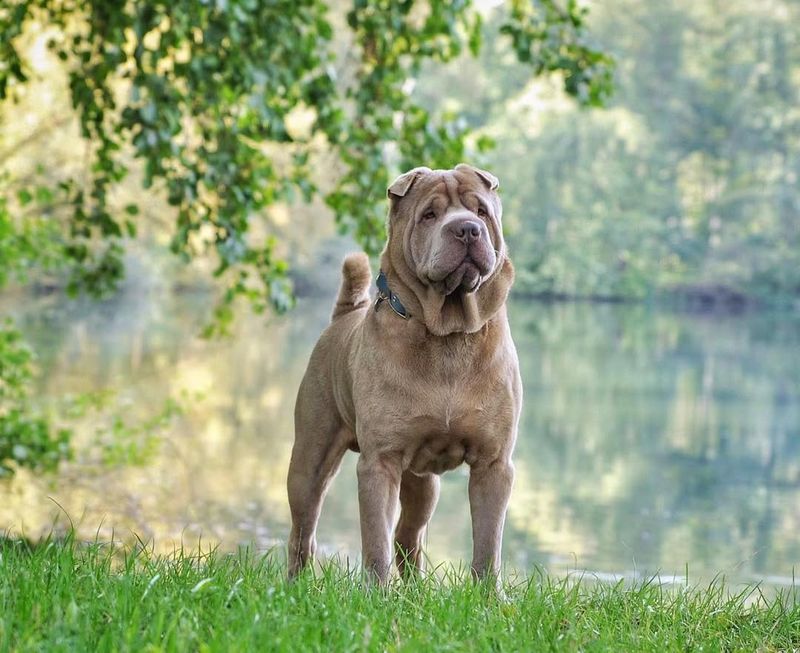
Shar Peis are a breed with a distinct look and personality to match. Their wrinkled skin is not just for show – it often requires diligent care to prevent infections in the folds. While their unique appearance can be endearing, their independent and sometimes aloof nature may not be the best fit for families with young children.
These dogs are known for being loyal and protective of their family but can be wary and suspicious of strangers. Early socialization is key to ensuring they grow up well-adjusted and friendly. Shar Peis require firm and consistent training, as they can be stubborn, often choosing to do things their own way.
In a family setting, their calm demeanor can be comforting, but their need for proper grooming and socialization can be a challenge. Families must be prepared to invest time in their care and training, ensuring their Shar Pei is both healthy and well-mannered.
This breed may be best suited for families who appreciate their unique characteristics and can offer a structured environment.
13. Cane Corso
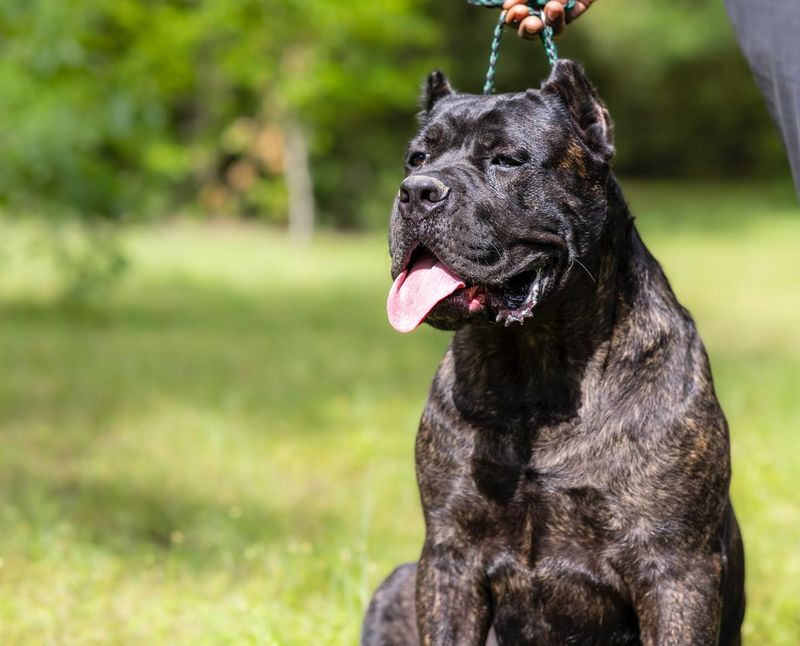
While their loyalty and guardianship abilities are impressive, these features also make them a challenging breed for families, especially those with young children or inexperienced dog owners. Their size and strength require owners who can provide firm, consistent leadership and training.
Without proper guidance, Cane Corsos can become overprotective and potentially aggressive with strangers. They are loyal to their family but need careful socialization to interact positively with others. Additionally, Cane Corsos thrive on companionship and can suffer from separation anxiety if left alone for extended periods.
Families considering a Cane Corso must be prepared to offer a structured, engaging environment and should have prior experience with large, strong breeds to ensure a harmonious household.
14. Belgian Malinois
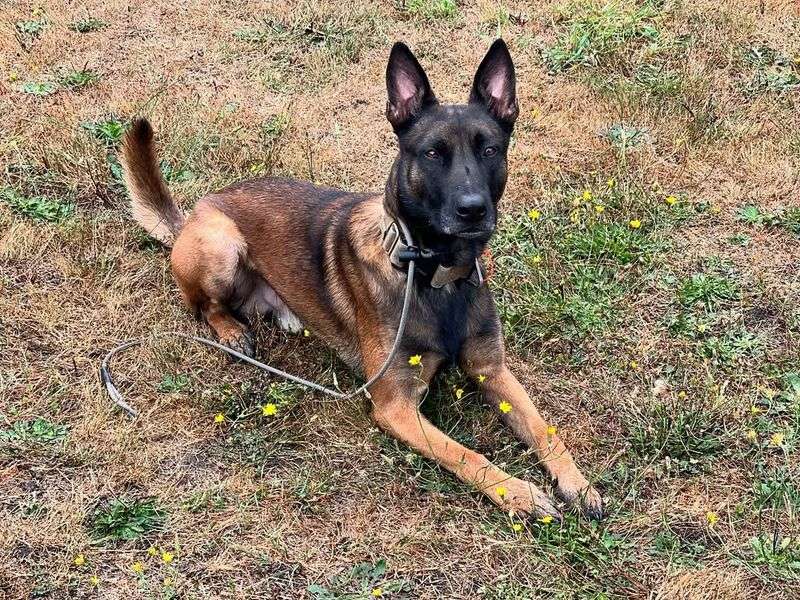
The Belgian Malinois, often used in police and military work, is a breed that embodies intelligence, energy, and loyalty. However, these traits also make them unsuitable for families who cannot meet their high demands for mental and physical stimulation. Without sufficient activity, they can become restless and destructive.
Known for their work ethic and intelligence, Belgian Malinois require experienced owners who can provide firm training and leadership. They excel in environments where they can be challenged and engaged, but their intensity may overwhelm families not prepared for their needs.
This breed’s protective nature requires careful socialization to ensure they are well-adjusted and friendly. They are best suited for active families who can provide plenty of exercise and training opportunities.
15. Lhasa Apso
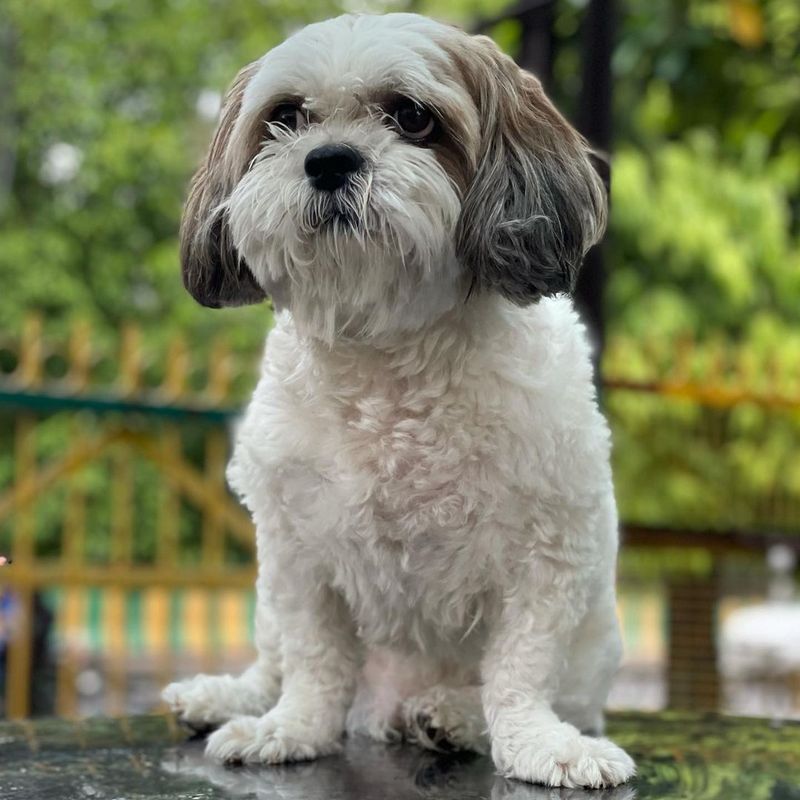
Known for their independent and stubborn nature, Lhasa Apsos can be aloof and are not always keen on being the center of family activities. Their grooming needs are significant, requiring regular maintenance to keep their coats free of tangles and mats. Families must be prepared for the time and effort involved in maintaining their Lhasa Apso’s appearance.
Additionally, these dogs are often wary of strangers and can be protective, necessitating early socialization and training. In a family setting, Lhasa Apsos require a calm and structured environment.
They do best in homes where their independence is respected, and they are given the space to be themselves. Families considering this breed should be ready for the grooming commitments and provide firm, consistent training to ensure their Lhasa Apso is a well-rounded companion.
16. Chinese Crested
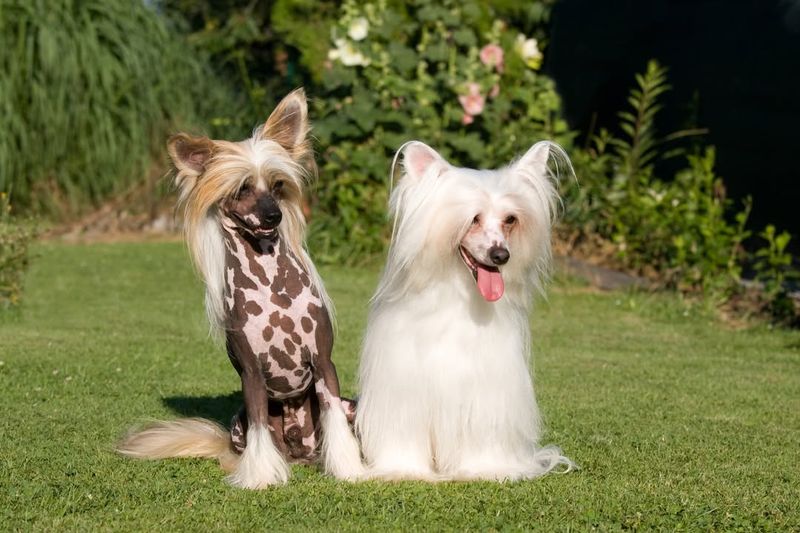
The Chinese Crested, with its distinctive hairless body and tufts of fur, is a breed that turns heads. Their unique appearance, however, comes with specific care needs that may not be ideal for families with young children. Their skin requires special attention to prevent sunburn and irritation, demanding diligent care and protection.
These dogs are known for their affectionate and playful nature, thriving in environments where they can be close to their human companions. However, their delicate build necessitates gentle handling, which might not suit homes with rambunctious kids.
Moreover, Chinese Cresteds can be prone to dental issues, requiring regular dental care and vet visits. Families considering this breed must weigh the demands of their care against their playful and loving nature.
They are best suited for households that can provide the necessary attention and care, ensuring their Chinese Crested remains healthy and happy.

